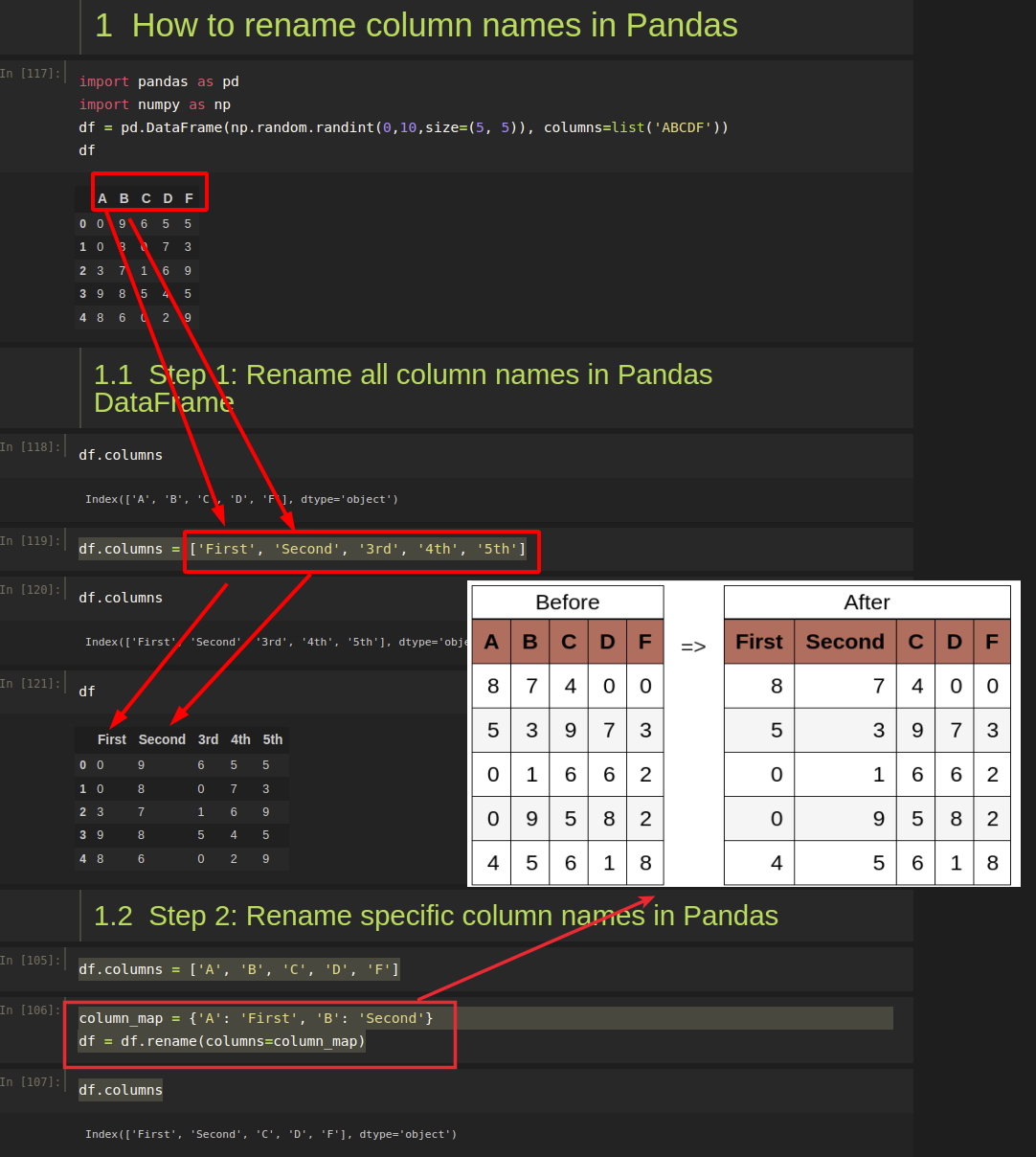
This method is quite useful when we need to rename some selected columns because we need to specify information only for the columns which are to be renamed. set_axis() function and specify axis = 1 to rename columns, like below 🔽 df.set_axis(, axis=1). Method 1: Using rename () function One way of renaming the columns in a Pandas Dataframe is by using the rename () function. this method can be used to label columns as well as rows.Īll you need to do is simply pass the list of column names to the. This method is originally used to set labels to DataFrame’s axis i.e.

You can rename those columns with a dictionary where you can use. If you want to rename both the index and columns in a Pandas DataFrame together, you can use the rename method and pass two dictionaries: one for the index and. When all above points kept in mind, this is the best method to change all columns in one go. If you want to change name of all columns of your dataframe. 📍 Note: The sequence of the column names list should be same in which you have columns in the DataFrame, otherwise the column names can be assigned incorrectly. Rename all the column names in python: first column is renamed as Customeruniqueid. Syntax to change column names in pandas dataframe explained with example. So, I would suggest to use it only when you are 100% sure that you want to change the column names. Learn to rename columns in pandas dataframe with an easy to understand tutorial. Here we need to define the specific information related.

The length of this names list must be exactly equal to the total number of columns in the DataFrame.Īnd without any other options like inplace, the column names are changed directly and permanently, this method is a bit risky take.⚠️ The very common and usual technique of renaming the DataFrame columns is by calling the rename() method. 📍 Note: You need to pass the names of all the columns. But instead of passing the old name - new name key-value pairs, we can also pass a function to columns parameter.įor example, converting all column names to upper case is quite simple using this trick, like below df.rename(columns= str.upper).head()Ĭhanging all column names at once using df.columns | Image by AuthorĪs you can see, I assigned list of new column names to df.columns and names of all columns are changed accordingly. Just like the first method above, we will still use the parameter columns in the. The next methods is a slight variation of. 📍 Note: Before making inplace = True in any function, it is always good idea to use. head() method to only see how it looks with changed column name. In order to retain the changes in the column names, you need to make inplace = True.Īs I did not wanted to retain the changed column names I used. 📍 Note: df.rename() consists an inplace parameter which is False by default. And values are Order_Status and Order_Quantity which are new column names. If so, you may use the following syntax to rename your column: df = df.Rename pandas dataframe columns using df.rename() | Image by AuthorĪs you can see, I passed dictionary in the parameter columns in df.rename(), where keys are Status and Quantity which are old column names. Need to rename columns in Pandas DataFrame?


 0 kommentar(er)
0 kommentar(er)
